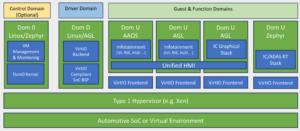Ryan Daws is a senior editor at TechForge Media with over a decade of experience in crafting compelling narratives and making complex topics accessible. His articles and interviews with industry leaders have earned him recognition as a key influencer by organisations like Onalytica. Under his leadership, publications have been praised by analyst firms such as Forrester for their excellence and performance. Connect with him on X (@gadget_ry) or Mastodon (@gadgetry@techhub.social)
5G RedCap technology offers IoT device manufacturers an affordable migration path from LTE. However, the road to widespread adoption may be bumpy, according to global technology intelligence firm ABI Research.
5G RedCap, designed as a natural replacement for LTE Cat-4 and Cat-6, targets mid-range IoT devices that don’t require the full capabilities of 5G. ABI Research forecasts that IoT RedCap module revenues will reach $1.2 billion from 2024 to 2029.
Despite the promising outlook, short-term adoption faces challenges.
Jonathan Budd, Industry Analyst at ABI Research, said: “While device OEMs are showing a keen interest in 5G RedCap, IoT revenues will likely remain limited in the short term due to excessive module pricing. In 2024, 5G RedCap modules are expected to sell at around the $50 mark, equating in some cases to a three-fold price premium on LTE Cat-4 modules.”
This significant price difference poses a major obstacle for manufacturers.
“Without the immediate threat of LTE network shutdowns, device OEMs are unlikely to upgrade, except for devices with longer lifecycles,” explains Budd. “Most IoT OEMs will not pay for a technology they do not yet need; as a replacement technology for LTE, 5G RedCap module ASPs must be driven down by at least 50% to make RedCap economically viable for manufacturers.”
The landscape becomes more interesting with the introduction of eRedCap modules in 2026. These are projected to be only 25% more expensive than Cat-1 modules, ranging from $10 to $15 per unit.
With more widespread 5G Standalone coverage expected by 2026, eRedCap migration is anticipated to gain traction more quickly than 5G RedCap. ABI Research projects cumulative eRedCap sales of $615 million from 2026 to 2029—primarily in security, telehealth, point-of-sale, and remote monitoring devices.
However, 5G RedCap isn’t out of the race yet.
“5G RedCap revenues are only expected to surge following the release of optimised second-generation chipsets in 2026. Coupled with greater manufacturing volumes, we should see 5G RedCap module ASPs halving by 2027, driving an additional wave of migration from LTE,” Budd concludes.
(Photo by Blocks Fletcher)
See also: Samsung and KT to deploy private 5G for Smart Naval Port
Want to learn about the IoT from industry leaders? Check out IoT Tech Expo taking place in Amsterdam, California, and London. The comprehensive event is co-located with other leading events including Cyber Security & Cloud Expo, AI & Big Data Expo, Intelligent Automation Conference, Edge Computing Expo, and Digital Transformation Week.
Explore other upcoming enterprise technology events and webinars powered by TechForge here.
Tags: 5g, 5g redcap, abi research, connectivity, internet of things, IoT, report, research, study



